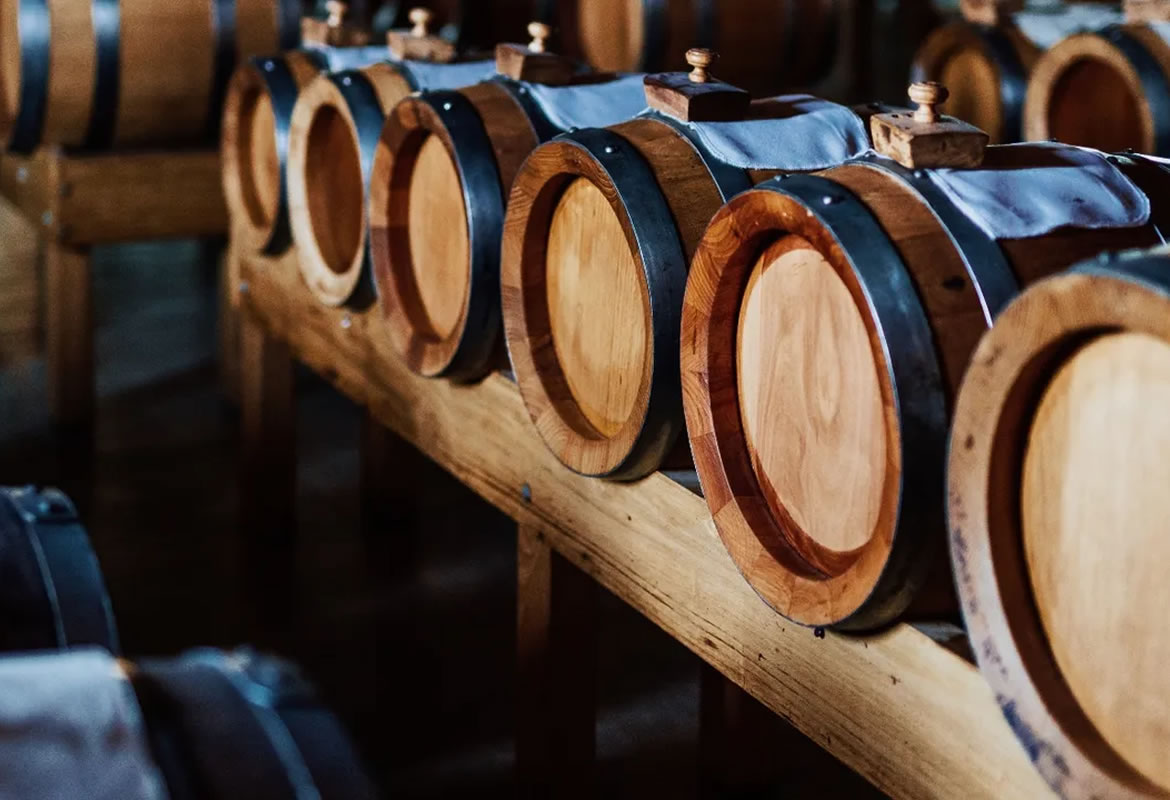Racking and racking: how the production of Traditional Balsamic Vinegar of Modena PDO works
The Balsamic Vinegar of Modena PDO is a product of the highest quality characterised by a special and long period of refinement and ageing, absolutely proven and certified. A versatile vinegar with a unique and unmistakable flavour and a very deep, intense and shiny black colour. Traditional Balsamic Vinegar of Modena PDO is able to make all kinds of dishes even more special and represents an excellence of Italian gastronomy. The quality of this product derives precisely from the production methods of the ancient vinegar factories, which scrupulously follow the Single Production Regulation, natural, artisanal and traditional preparation.
First steps in the production of Balsamic Vinegar of Modena
.
The production of Traditional Balsamic Vinegar of Modena PDO starts with the grapes, which must be produced within the province of Modena and carefully monitored to obtain quality fruit. The typical grape varieties used for this product are Lambrusco, Trebbiano, Ancellotta, Sauvignon, Berzemino, Sgavetta, and Occhio di Gatta. .
Then, by gently crushing the grapes, the fresh must with a pleasant, clean taste is obtained, which is then transferred to the typical cooking cauldrons where it is transformed into cooked must, cooking very slowly at over 80 °C. At the end it is thus possible to obtain a concentrated must with a typical dark colour.
fermentation and racking
.
The cooked must obtained from the stages described above is then decanted into the special diamis tanks, in which the yeasts naturally present in the vinegar cellar begin the alcoholic fermentation. The sugar is then slowly and gradually transformed into alcohol, resulting in the so-called base wine. Obviously, this fermentation process is carefully controlled by master vinegar makers so that everything proceeds correctly.
Following the alcoholic fermentation, the most complicated phase in the production of this vinegar begins, which generally takes place in the spring and winter months: the acetic fermentation. The base wine is decanted into wooden mother barrels and here it is mixed with a third of aged Traditional Balsamic Vinegar of Modena PDO, rich in vinegar bacteria. The alcohol part thus begins fermentation in vinegar until the basic vinegar is created.
When the product reaches the appropriate acidity, over a period of time that can vary from one to two years, it is transferred to special batteries made of different woods of different sizes. During the winter and then the spring period, classic racking is carried out to restore the level of the product in the barrels that has evaporated in the previous summer. This starts with the smallest cask and continues up to the largest cask. The latter can eventually be filled with the basic vinegar from the mother casks, remembering that these casks should never be filled more than 3/4 full to maintain good air contact.

Tasting
Once the production of Traditional Balsamic Vinegar of Modena PDO is complete, it is taken to the Consortium for Protection, which is responsible for carrying out all the appropriate checks in agreement with the Modena Chamber of Commerce. The tasting commission assesses its suitability and, after a positive outcome, the product is bottled directly at the Consortium. This results in two products: a aged vinegar, aged for a minimum of 12 years, and a extra-aged vinegar aged for a minimum of 25 years.


